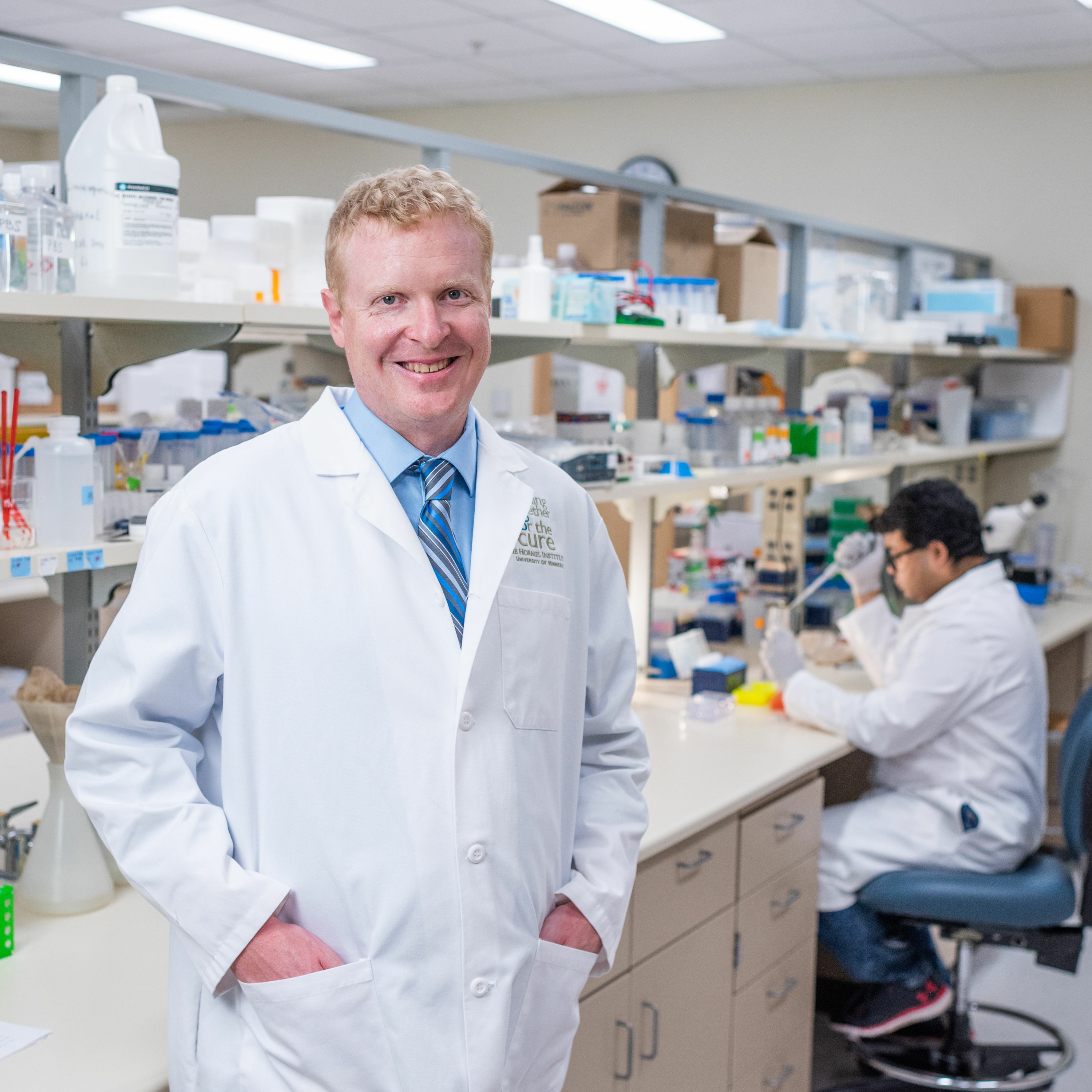What causes small cell lung cancer growth and resistance?

Lung cancer is the leading cause of cancer death among both men and women in the United States and worldwide. Small cell lung cancer comprises 15-17% of lung cancer cases, and it is the most aggressive subtype of lung cancer, growing rapidly and spreading to other organs quickly. \n\nLuke Hoeppner, PhD, received American Cancer Society funding to test whether therapeutically targeting a specific molecular pathway inhibits small cell lung cancer growth. \n\nDr. Hoeppner\u2019s lab was the first to report that activation of this particular pathway, called dopamine signaling, inhibits other forms of lung cancer growth. By therapeutically altering the dopamine signaling pathway, he hopes to inhibit small cell lung cancer progression and drug resistance, facilitating further advancement to new treatments.\n\nFor more information about lung cancer, visit https://www.cancer.org/cancer/lung-cancer.html. \n\nLuke Hoeppner, PhD, is Assistant Professor and leader of the Cancer Biology research section at The Hormel Institute, University of Minnesota. \n\n5:09 \u2013 What is small cell lung cancer? What vital statistics about it should we know?\n\n5:57 \u2013What is the standard therapy for small cell lung cancer patients?\n\n8:13 \u2013 Why is it so hard to treat?\n\n10:04 \u2013 \u201cAnother way to put it is\u2026\u201d\n\n13:59 \u2013 Why drug resistance is such an important area of research for small cell lung cancer\n\n15:42 \u2013 \u201cWe\u2019re trying to focus on understanding what in particular small cell lung cancer cells are doing to evade chemotherapy, and is there a combination treatment that we could add to chemotherapy that would prevent (resistance)?\u201d\n\n16:18 \u2013 On his lab\u2019s novel approach to combatting resistance\n\n24:17 \u2013 What are the therapeutic implications? \n\n25:05 \u2013 Why he\u2019s optimistic about this line of research \n\n26:31 \u2013 On how American Cancer Society funding has impacted his research\n\n27:18 \u2013 A message he\u2019d like to share with cancer patients, survivors, and caregivers